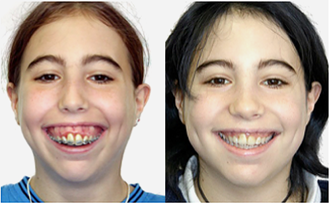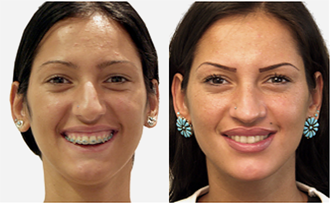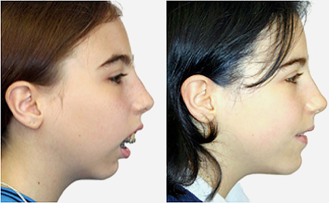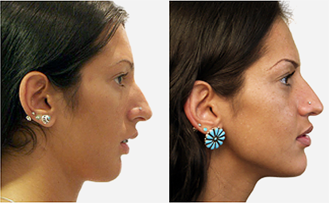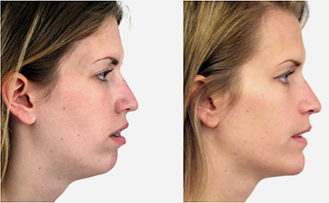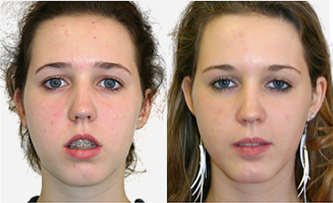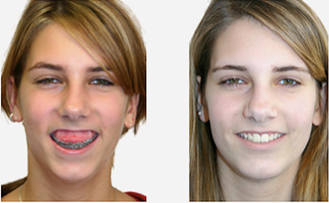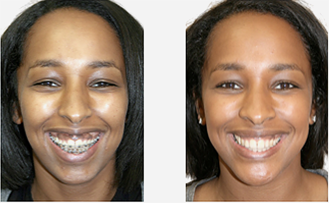Long face syndrome/gummy smile
Maxillary impaction for natural lip closure and midface symmetry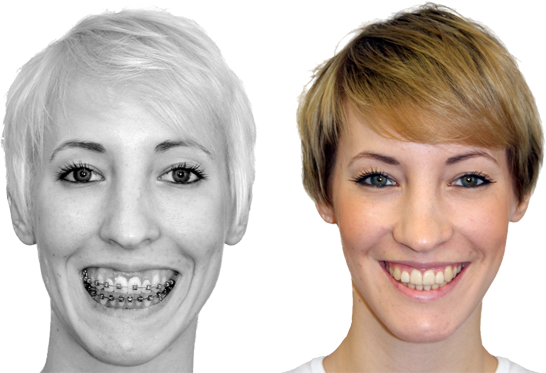
Characteristics and complaints
Long face syndrome is characterized by a long midface and excessive exposure of the teeth and gums. This is often accompanied by a retrusive lower jaw. Ideally, the contours of the upper lip should almost reach the gums when smiling (however, women might show more teeth and gums than men). If excessive gum tissue is exposed when smiling, the smile loses its positive impression. Doctors refer to this as a gummy smile. In addition to the aesthetic impact, this issue can lead to more problems such as lip incompetence. This results in constantly dry mucous membranes, increasing the risk of cavities. Nasal breathing is often also obstructed, leading to increased mouth breathing.
The corrective surgery
By removing a segment of the bone, the upper jaw is lifted. and the gum tissue and smile line become symmetrical again.
Advantages of our surgical procedure
- no exterior skin incisions
- no jaw wiring
- short surgery and short hospitalizationkurze Operationsdauer und kurzer Klinikaufenthalt
- no blood products
- no repeat surgery
Procedure Mandibular Impaction
A gummy smile is not a medical issue. It is often just an aesthetic issue. The procedure is carried out while the patient is under general anesthesia. The aim of this surgery is to secure occlusion with symmetrical facial proportions. This improves breathing and enables lip closure.
Thanks to minimally invasive surgical techniques, you can eat, drink and brush your teeth at any stage.
Complications rarely occur during this procedure. If indicated, the costs of this surgery will be fully covered for patients who have taken out supplemental hospital indemnity insurance prior to the start of treatment. The cost for patients with statutory health insurance will be covered to a large extent.
Please do not hesitate to contact our team if you have any questions.
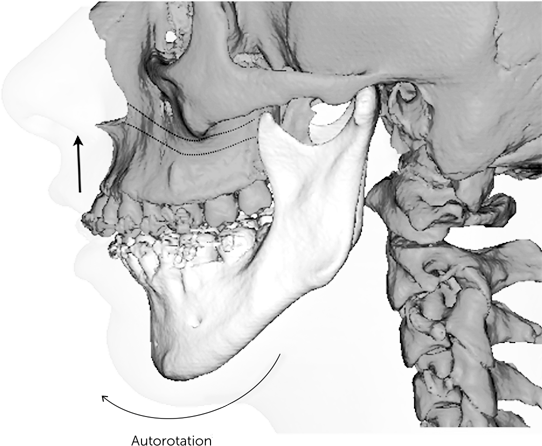
Procedure
Maxillary impaction is carried out once the orthodontist has shaped the dental arches and made plans for surgery. The impaction is carried out exclusively via the oral cavity to avoid external scars. The upper jaw is loosened, shortened and then fixed in its predetermined position using mini plates. The lower jaw then “swings” forward (autorotation), partially compensating for the overbite. Oftentimes, the lower jaw will still need slight realigning. The inpatient stay lasts 5 days. Either the orthodontist or our team will carry out a weekly follow-up during the first 6 weeks post-surgery. Final adjustments are made at this stage.
What should I pay attention to?
- Cool the area often and well during the first three days
- Good oral hygiene (children’s toothbrush, mouthwash)
- Smoking can compromise the distraction result - smoking is prohibited!
- Do not blow your nose for at least 2 weeks
- Do not use arnica before the surgery, and no aspirin before or after the surgery!
- Only eat soft foods for approx. 6 weeks post-surgery (e.g. pasta)
- Physical exercise should be avoided for 6-8 weeks during the healing phase
Possible post-op
complaints
- Due to general blockage in the nose, nosebleeds can occur up to 4 weeks post-surgery
- Mild reversible numbness in the upper lip
- Swelling goes down by 2/3 after approx. 2 weeks. Residual swelling can occur up to 4 months post-surgery
Orthodontic treatment/maxillofacial surgery Treatment timeline
Upper and/or lower jaw expansion
RPE | Mandibular distraction 8-12 months Orthodontic
pre-treatment
Corrective jaw surgery
aftercare + 6 months Healing phase
removal of plates, if need be

